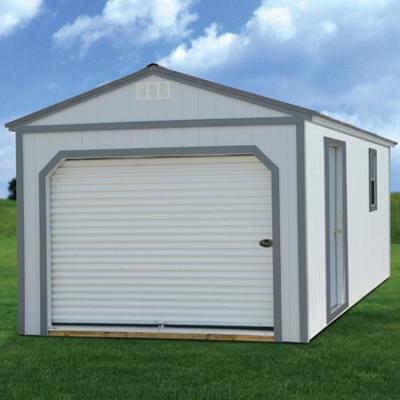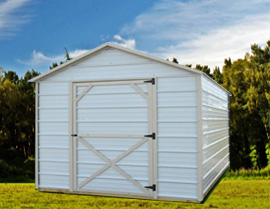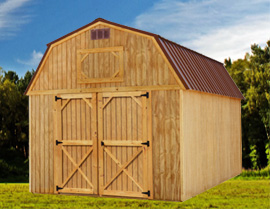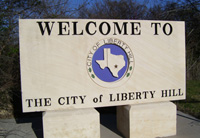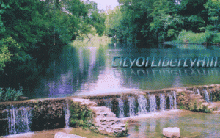We have respectfully utilized excerpts from the Turk Pipkin book Born of the River which eloquently tells the story of the Colorado River and the LCRA.
Images of the dam construction courtesy of LCRA Corporate Archives
BORN of the RIVER
THE COLORADO RIVER AND THE LCRA
On August 17, 1936, the LCRA Board chose what is known as the Hughes site at Marshall Ford – twenty miles upstream from Austin – as the location for what was to be the Colorado’s main flood-control dam.
The design and bidding process for the project was greatly accelerated by utilizing documents from the Grand Coulee Dam, then under construction on the Columbia River at a similar size of 180 feet high and 4,000 feet long. Despite the massive size of the proposed lake, acquisition of land was not difficult because the steep cedar-filled canyons were primarily remote ranch lands.
The construction contract was awarded to Brown & Root – a risky project for the relatively young company since funding was only secured for the first half of the project. At the ground-breaking ceremony on February 19, 1937, Secretary of the Interior Harold Ickes announced that the Marshall Ford Dam would be built in two phases, the first 190 feet in height and the second, 266 feet, which would double the cost from $10 million to $20 million.
A potentially severe setback for the agency occurred on February 22nd, when the LCRA’s chief supporter in Washington, Congressman J.P. Buchanan, suffered a heart attack at work and died that night at the U.S. Naval Hospital in Bethesda, Maryland.
Six days later, with the encouragement and support of Alvin Wirtz, 28 year old Lyndon Johnson announced his intention to run for Buchanan’s seat. Promising to bring electricity to the rural areas of his Hill Country district, Johnson won the election over a field of eight candidates. His campaign slogan “A vote for Johnson is a vote for Roosevelt and progress.”
Johnson and Wirtz became powerful allies of the LCRA, and together they were responsible for much of the Authority’s success.
A severe flood in July, 1938, despite the completion of Buchanan Dam, caused considerable damage all the way to the coast and prompted an investigation into the LCRA’s flood control plan. In a general meeting at the House of Representatives Chamber of the State Capitol, Johnson informed the assembled masses that, “the federal government came in and said it was advisable, if we were to control such floods as we had in 1935 – and last week, to raise that Marshall Ford Dam from 109 feet to 265 feet.”
Early in 1939, the LCRA board of directors formally agreed to reserve 800,000 acre-feet of storage capacity at Marshall Ford dam for flood control purposes. This additional storage space would be provided by raising the height of the dam to the full 266 feet at a cost of $17 million above the previously approved budget.
The money for the higher dam was provided by the U.S. Bureau of Reclamation and the Public Works Administration in a bill rescued by Texan Sam Rayburn, who was the majority leader of the House. The bill passed on May 10, 1939, and the LCRA began its last important step in harnessing the full fury of the Colorado. The generators at Marshall Ford went into operation on January 27, 1941, and construction was completed in May 1942.
The LCRA Board voted on February 21, 1941, to change the dam’s name to Mansfield Dam, after U.S. Representative J.J. Mansfield, then eighty years old.
LYNDON and the DAM
The rise of Lyndon Johnson’s political career during the 1930′s and 1940′s so perfectly paralleled the rise of the LCRA that it seems likely that neither Lyndon nor the LCRA could have succeeded without the other.
In 1934 young congressional aide Lyndon Johnson helped Alvin J. Wirtz and Thomas Ferguson to speed approval of financing of the newly formed Lower Colorado River Authority from the Public Works Administration. “We left there feeling he could get you into any place,” Ferguson later remarked of Johnson.
In 1937 Lyndon Johnson was back in Austin, serving as the Texas director of the National Youth Administration, when Congressman J.P. Buchanan, the LCRA’s cheif advocate in Washington, died of a heart attack. Johnson asked advice on whether he should run for Buchanan’s seat from his friend and mentor Alvin Wirtz. Wirtz advised Johnson that he was perhaps too young and was also from the smallest county in the district.
With his campaign funding already in hand, Johnson decided to take his chances and was elected over a field of 8 candidates. Having run on the promise to bring electricity to his constituents, he then began to work with the LCRA to make it happen. The cornerstones of his Congressional agenda were rural development, flood control, and cheap electrical power for all.
One of his first accomplishments was to push through a bill written by Wirtz to authorize the construction of Mansfield Dam.
When the existing private utility companies offered to buy the LCRA’s hydropower, Johnson argued that, “The present high electric rates in Texas are inexcusable and beyond reason. Rural electrification offers the Authority the opportunity to put into effect the principles and aims behind the total administration program in which it has been given a chance to exist in the first place – a control of floods and the turning of power into channels for a better life for farmers, ranchers and residents of small cities.”
He traveled tirelessly, recruiting members for the Pedernales Electric Co-op and, when its funding was approved, convinced the REA to shorten six months of paperwork to a single day so that he could hand-deliver the good news to the people of his district.
In 1938 Johnson persuaded the federal government to provide $10 million to the LCRA for completion of current projects, construction of transmission lines and retirement of outstanding debt, then chided the LCRA for acting so slowly to achieve its full potential.
He was involved in almost every ensuing LCRA project: defending flood control decisions, calling for increasing the height of Mansfield Dam, and reminding the Board that it was authorized to enact soil conservation programs. For the following two decades he worked tirelessly for the benefit of his constituents through the policies of the LCRA.
“Of all the endeavors on which I have worked in public life, I am proudest of the accomplishment in developing the Colorado River.
It is not the damming of the streams or the harnessing of the floods in which I take pride, but rather in the ending of the waste of the region.
The region – so unproductive in my youth – is now a vital part of the national economy and potential. More important, the wastage of human resources in the whole region has been reduced. Men and women have been released from the waste of drudgery and toil against the unyielding rocks of the Texas hills. This is the true fulfillment of the true responsibility of government.”
Lyndon Johnson, 1958





